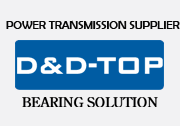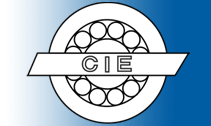|
| Basic Technical Parameter |
Ball screws and lead screws often are not interchangable, and there’s always a trade-off between precision, rigidity and load capacity. I’m also told that specs don’t always predict performance. I’d like some experienced views on their real-world differences |
More Than You Might Think
The three types of commonly used screw mechanisms are planetary roller screw, ball screw and acme or lead screw. There are significant differences between the three.
Lead screws use a typically triangular thread in the nut and on the screw shaft. The result is high contact area and a high load-carrying capacity and high stiffness, but with very low efficiency. The constant sliding friction and low efficiency limits the rotational, and thus linear speed available, and also limits the duty cycle to typically far less than 100%. |
 |
MORE CONTACT
Comparing a similar size ball screw to the planetary roller screw design illustrates many more contact points on the roller screw, which can result in a load-carrying capacity up to 15 times greater than ball screws, as well as improved stiffness.
Source: EXLAR |
|
Ball screws offer high efficiency due to the rolling nature of the ball bearings. This allows reasonable speed and typically 100% duty cycle when used within the device ratings. Stiffness is much less than an acme screw, and, due to much lower contact area, the load-carrying capacity is much less.
Planetary roller screws offer the best of both worlds. Roller screws provide high thread-area contact through the use of threaded rollers. This equates to much higher load-carrying capacity and life than a ball screw. This also equates to much higher rigidity than a ball screw. Because the threaded rollers are captured in a planetary fashion, they are not subject to the conflicting friction of the ball bearings within a ball screw, which allows for higher rotational acceleration and the same or higher rotational speeds. The rolling nature of the threaded rollers provides the high efficiency of a ball screw, in contrast to the low efficiency of an acme screw. |
| This One’s Just Right |
There is a general distinction between the applications for a ball and lead screw. Lead screws are applied in OEM applications where a “just right” solution is required. Lead screws can be tailored easily to provide the required performance for the right applications at the lowest cost. This sometimes requires lifecycle testing in the design phase, but for an OEM the extra upfront work is well worth the product cost savings. The ability of ball screws to carry much higher loads and achieve faster speeds with continuous duty cycles can be well worth their added cost. For end users, the predictability of ball screws makes them the best choice for fast integration and reliability. Factory automation relies heavily on ball screw technology for instance. Of course there are many OEM applications where a ball screw is required such as in the machine tool industry. For OEMs, performance and cost, not analytical predictability, ultimately dictate the technology.
The key difference between a ball screw and a lead screw is in the way the load is carried between the moving surfaces. A ball screw uses recirculating ball bearings to minimize friction and maximize efficiency while a lead screw depends on low coefficients of friction between sliding surfaces. A lead screw therefore typically cannot achieve the efficiency of a ball screw, which is around 90%. A quick review of tribology—study of wear and friction—leads one to conclude that sliding friction is inherently less predictable than power transmission using recirculating ball technology. The fatigue life equations, e.g. L10 life, are fairly reliable in their range of applicability. Thus, there is a fundamental difference in application of a ball screw and a lead screw due to the ability to predict performance and life.
With all the advantages of a ball screw—load capacity, rigidity, efficiency, duty cycle, predictability—there is a price to be paid. Although their performance-to-cost ratio is very high when compared to other means of translating linear motion, a ball screw design is more complex, requiring hardened precision bearing surfaces and a ball recirculation mechanism. On the other hand, a lead screw is very compact, offers great design flexibility, is quiet when properly applied, is generally corrosion-resistant and can be made to self-lock for vertical applications. They are very capable in many applications, but they do have their limitations as well.
Robert Lipsett, engineering manager,
Thomson BSA/Danaher Motion |
| Let’s Compare |
A fundamental difference is that ball screws have circulating balls, which eliminates the sliding friction of lead screws. Here’s a tally of the ball screw’s pluses and minuses.
- Less heat buildup due to friction
- More efficient running due to the lower friction (90+% efficiency, depending on lead angle)
- High efficiency promotes smaller motor size
- Lower system cost of ball screw, bearings, motor and drive vs. lead screw
- Ball screw is higher in cost, component to component
- Better suited for applications where high throughput, high speeds and continuous or long cycle times are required, due to the lower friction and lower heat buildup
- Not self-locking, susceptible to back-driving due to the high efficiency
- Can be a problem in vertical application
- Requires brake to keep the load from falling
- Typically, lead and positioning accuracy are much better with ball screws
- No stick-slip.
Lead screws have a sliding motion of the nut to the screw thread. Here’s how they measure up.
- Higher running friction promotes hotter running screw
- Lower efficiency due to the higher friction (typically, 50% efficiency)
- Lower efficiency requires larger motor and drive size
- Potential higher system cost when looking at ball screw, bearings, motor and drive vs. lead screw
- Lead screw is lower cost.
- Not a good option for high-throughput, high-speed or continuous or long-cycle-time applications
- Self-locking due to the sliding motion
- Better suited for vertical application
- No brake required
- Lower lead and positioning accuracy
- Susceptible to stick-slip, high breakaway friction in beginning a motion
|
 |
BALANCING AXIS
Ball screw and rail combinations like this provide a good balance of travel accuracy and load-carrying capability, even with axial or torsional loading.
Source: Bosch Rexroth |
|
There are many differences between lead screws and ball screws, and in some instances they are interchangeable, but various factors must be considered.There Always Are Trade-Offs
A lead screw has about 40-50% efficiency to a ball screw’s 90-95%. The extra torque required to power the lead screw often offsets the extra cost of a ball screw. In addition, lead screws need to be replaced much more frequently, costing downtime and additional product.
Because it uses sliding motion, a lead screw generates additional heat and is not able to be nearly as repeatable as a ball screw. In addition, while some lead screws can obtain C5 level accuracy, the product cannot hold the accuracy indefinitely as the sliding motion grinds away the accuracy level.
A ball screw is much more effective than a lead screw in a wide range of instances. However in the case of back drive, the smoothness of a ball screw works against itself. The natural friction of the lead screw can prevent back drive making it an effective solution in some vertical applications.
In sum, for applications that are miniature in size that require very low accuracy, low speed or resistance to back driving without the aid of a brake, a lead screw can work well. However, because the lead screw uses sliding motion, it will generate more heat and consume more power the larger the application is. Oftentimes, any savings that are generated upfront in product cost is offset many times over with additional power, replacement products and downtime. |
| Dan Passero, manager, marketing and development, NSK Precision America |
| Understand the Differences |
In a general sense, all power screw mechanisms can be referred to generically as lead screws. However, to properly apply them, it is necessary to fully understand the different technologies.
A ball screw employs a thread form that has a circular thread formed in the screw. The nut has a matched thread form that allows recirculating balls to transmit force and relative motion. An acme screw uses a thread form developed more than 100 years ago that has a trapezoidal tooth. Force is transmitted by sliding contact on the flanks of the thread. A roller screw has a thread form in which force is transmitted through a matched set of rollers which are allowed to rotate within the nut while contacting the thread form in the screw. The rollers provide increased contact area with the screw resulting in very high force transmission capabilities.
Screw manufacturers apply ratings for static and dynamic thrust and lead accuracy. Dynamic thrust will be applicable for a specified life in terms of a number of revolutions of the screw. Lead accuracy is a measure of the precision of the screw component. This will be specified as a particular “grade” or in terms of linear error per unit of length. Screws manufactured using a thread-rolling process will be less precise and less costly than those using a grinding process. Rolled ball screws can be a good value; however they might lack the high level of lead accuracy common to a ground ball screw.
Roller screws generally offer high thrust capabilities for their diameter, are normally ground and offer high levels of lead accuracy, as well. Acme screws are typically the lowest cost option but could suffer with efficiency and long-term position error due to nut wear.
Repeatability and accuracy are sometimes misunderstood. It is possible for a rolled screw to be highly repeatable without it being highly accurate. A ground screw generally will have a high degree of accuracy, as well as a high degree of repeatability. Pay attention to application requirements for each of these attributes for proper screw selection.
In applying lead screws and ball screws, one must have a good understanding of the desired requirements to avoid over-specifying or under-specifying the component leading to excessive cost or limited life. |
Gary Rosengren, director of engineering, Tolomatic |
| MARCH’S PROBLEM |
We’re a panel builder branching out to work with OEMs whose machines often are installed in explosive dust and other hazardous areas. We need to design the electrical and control panels accordingly. Are there formulae or rules of thumb to calculate when it makes sense to use a purged enclosure instead of an explosion-proof enclosure? The machine builder’s customers often have both options in the same facility, so it’s not just a case of a clear preference for one over the other.
Send us you comments, suggestions or solutions for this problem. We’ll include it in the March ’09 issue and post it on www.ControlDesign.com. Send visuals if you’d like—a sketch is fine. Email us at RealAnswers@putman.net. Please include your company, location and title in the response.
|
 |
 |
|
 |




